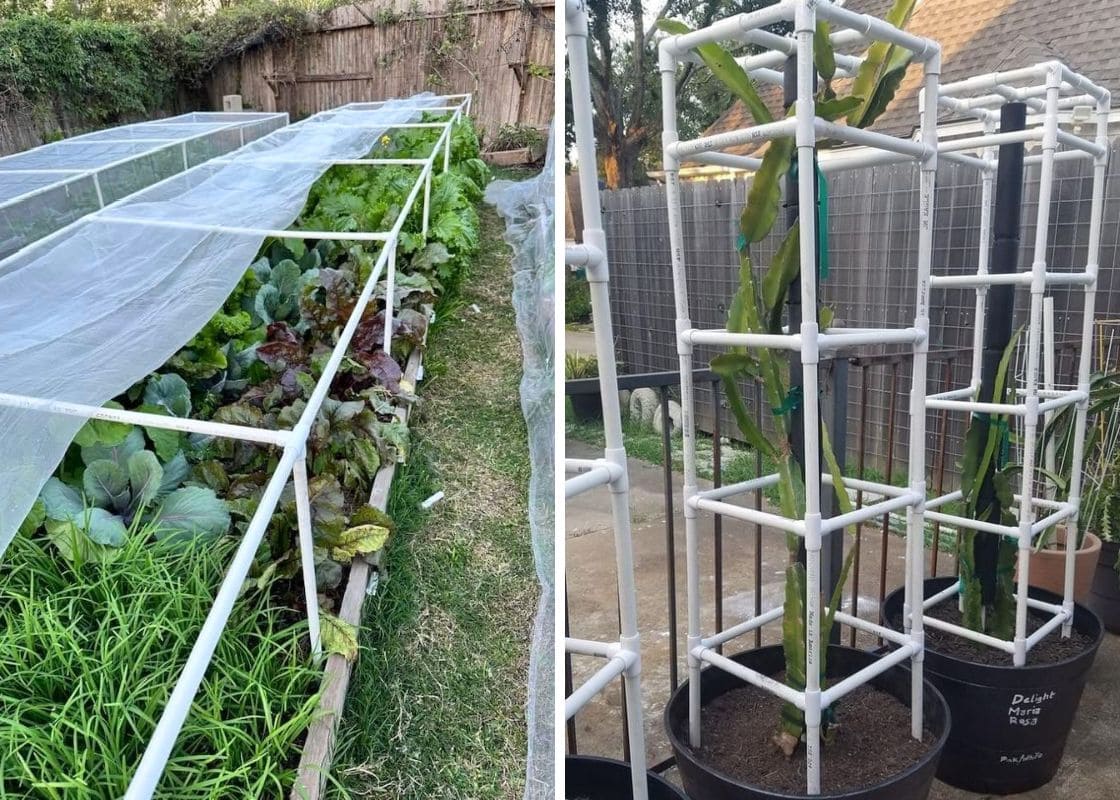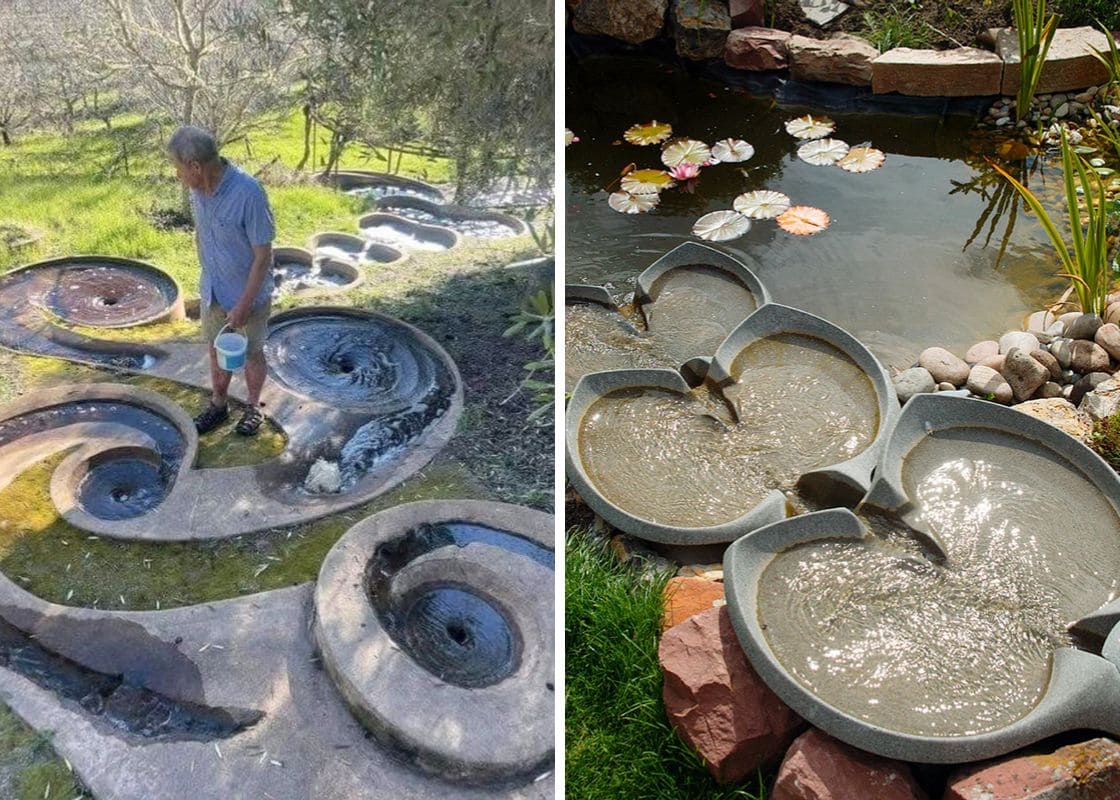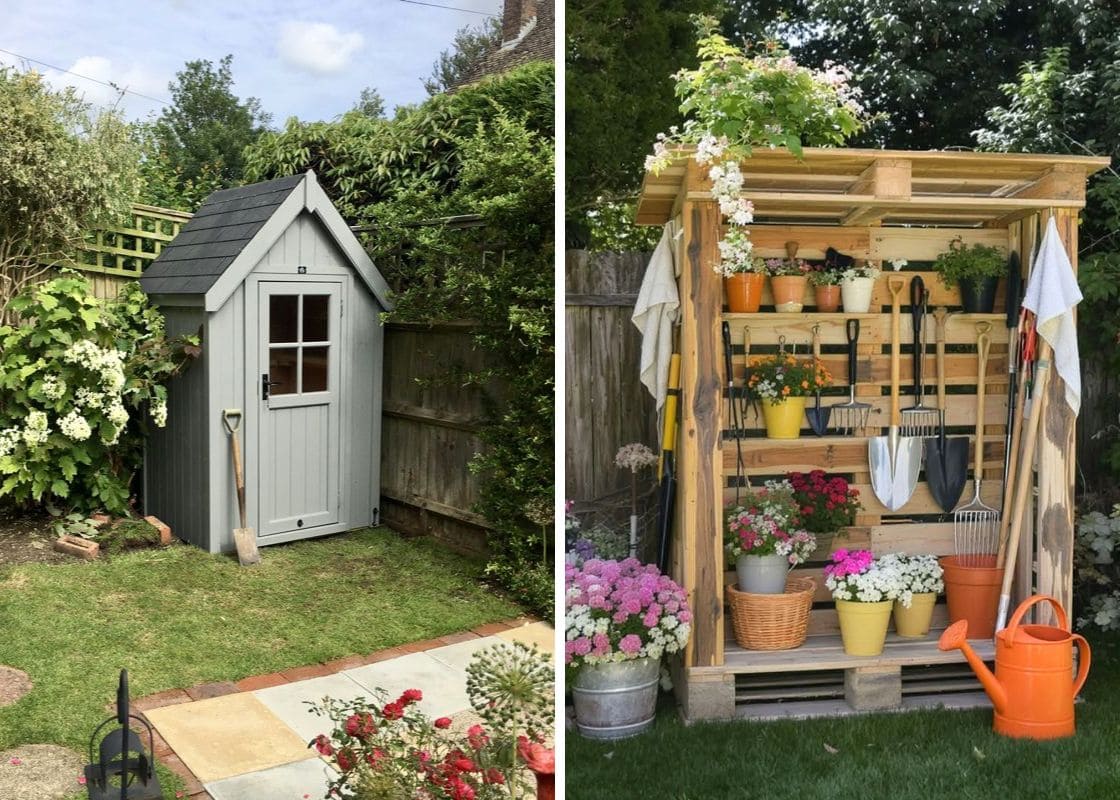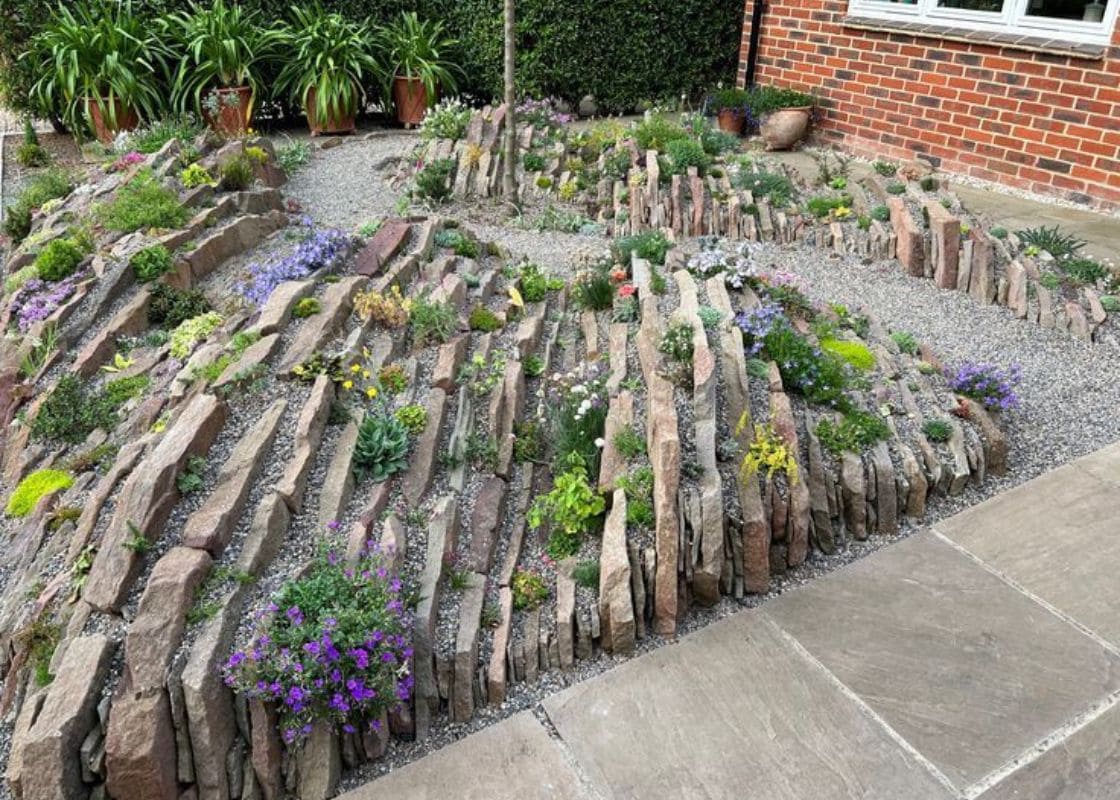Perennials are a gardener’s best friend when it comes to creating stunning and long-lasting cut flower arrangements.
Unlike annuals, perennials return year after year, offering reliable blooms and foliage that add both beauty and structure to your garden.
The right selection can provide a continuous supply of fresh flowers throughout the growing season, making your arrangements not only beautiful but also cost-effective.
Peruvian Lily (Alstroemeria)

- Mature Size: 1-3 feet tall, 1-2 feet wide
- Sun Exposure: Full sun to partial shade
- Soil Requirement: Well-drained, fertile soil
- USDA Hardiness Zone: 6-10
Peruvian lily is known for vibrant, trumpet-shaped flowers that come in pink, purple, red, orange, and white, it’s a favorite among gardeners and florists alike.
The plant boasts lush, lance-shaped leaves that provide a beautiful backdrop to its colorful blooms.
Peruvian lily propagation is typically done through division. It prefers well-drained, fertile soil and thrives in full sun to partial shade. It’s low-maintenance and requires regular watering.
These lilies are excellent for attracting bees and butterflies. They are also resistant to most pests and diseases, ensuring healthy, long-lasting growth.
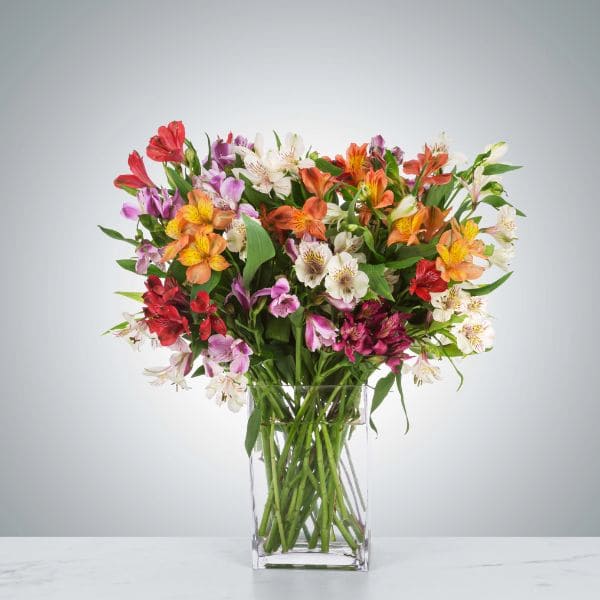
When harvesting lilies, snip the stems early in the morning when the flowers are just beginning to open to ensure the blooms last longer in your vase.
Sweet William (Dianthus barbatus)

- Mature Size: 1-2 feet tall, 1-1.5 feet wide
- Sun Exposure: Full sun to partial shade
- Soil Requirement: Well-drained, fertile soil
- USDA Hardiness Zone: 3-9
Sweet William produces lance-shaped leaves and clusters of small flowers in pink, red, white, and purple. The flowers have a sweet, spicy fragrance that is noticeable in the early morning and evening.
You can spread their beauty through seed or division. Sweet William prefers well-drained, fertile soil and thrives in full sun to partial shade.
These flowers are excellent for attracting pollinators such as bees and butterflies. They are also resistant to most pests and diseases ensuring robust and healthy growth.
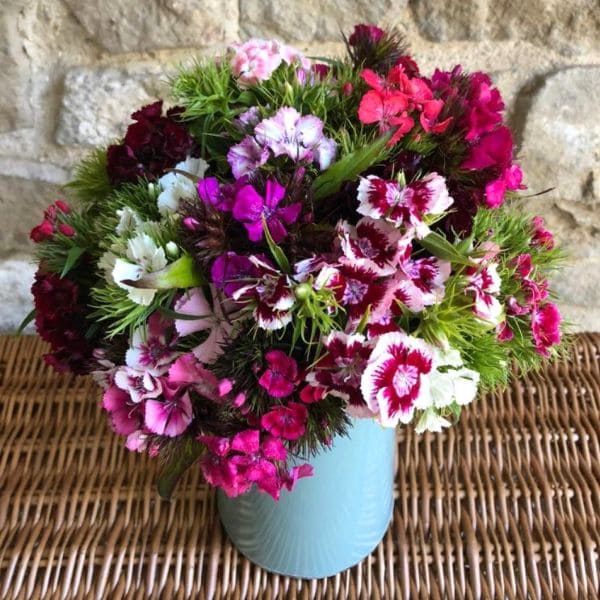
When arranging, select stems with several open flowers and a few buds to ensure your bouquet will continue to bloom and provide visual interest.
Speedwell (Veronica)
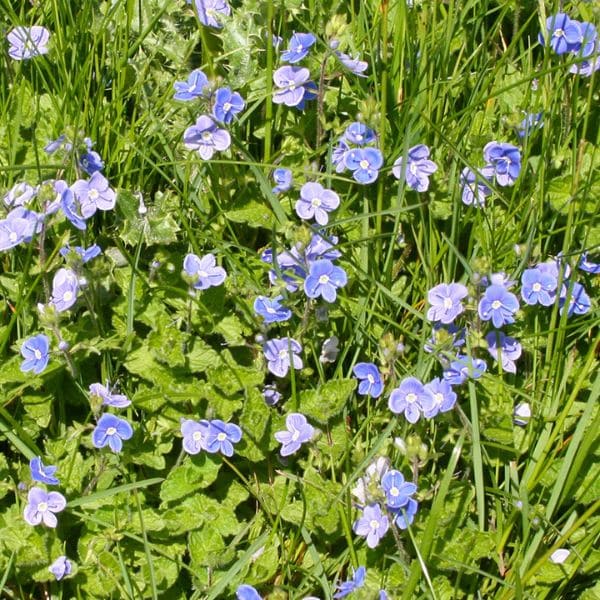
- Mature Size: 1-3 feet tall, 1-2 feet wide
- Sun Exposure: Full sun to partial shade
- Soil Requirement: Well-drained, moderately fertile soil
- USDA Hardiness Zone: 4-8
Speedwell has elegant spikes of small, star-shaped flowers in shades of blue, pink, purple, and white. Its flowers are complemented by lance-shaped, deep green leaves.
Speedwell thrives in well-drained, moderately fertile soil and enjoys full sun to partial shade. It is a magnet for pollinators, attracting bees and butterflies.
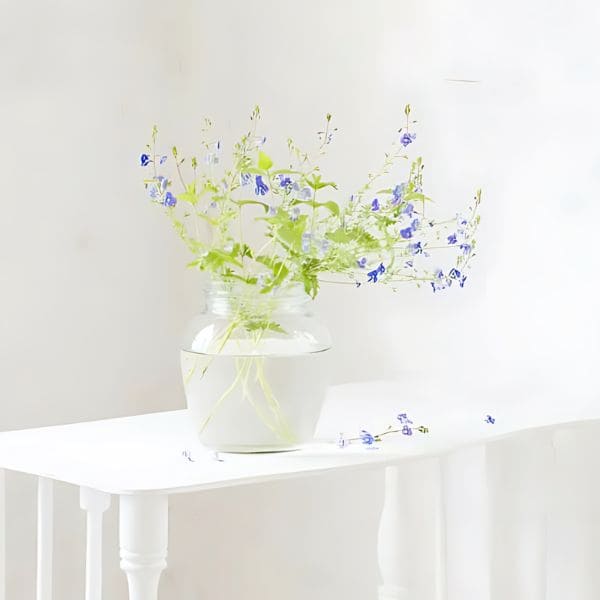
When cutting, select stems with partially opened blooms for the longest-lasting display.
Speedwell’s slender spikes add height and texture to your vase, and they mix beautifully with other perennials like shasta daisies and coreopsis.
Sea Holly (Eryngium)
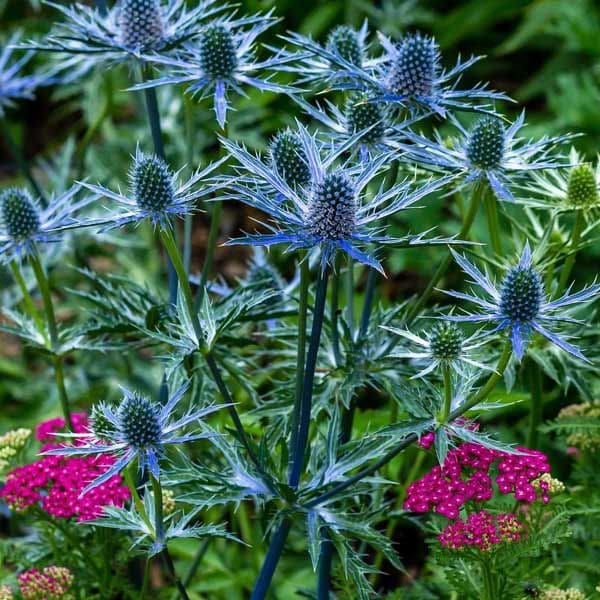
- Mature Size: 1-3 feet tall, 1-2 feet wide
- Sun Exposure: Full sun
- Soil Requirement: Well-drained, sandy or rocky soil
- USDA Hardiness Zone: 4-9
Native to coastal areas of Europe and the Mediterranean, sea holly owns eye-catching, thistle-like flowers in shades of metallic blue and silver.
The flowers are surrounded by spiky, silvery bracts and sit atop stiff, branching stems. Its leaves are also spiny and blue-green.
Sea holly thrives in well-drained, sandy or rocky soil and prefers full sun. It’s a hardy plant that’s drought-tolerant once established and resistant to most pests and diseases.
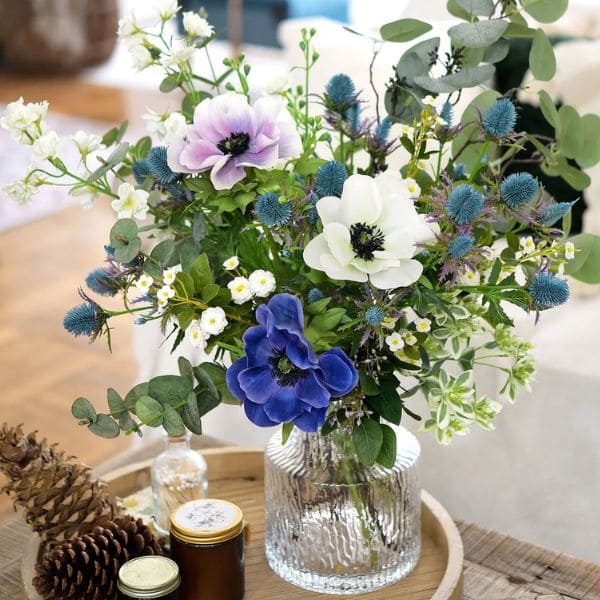
This plant is excellent for attracting pollinators like bees and butterflies. In mixed bouquets, it is a fantastic filler for softer flowers like roses or peonies.
Hosta (Plantain Lily)
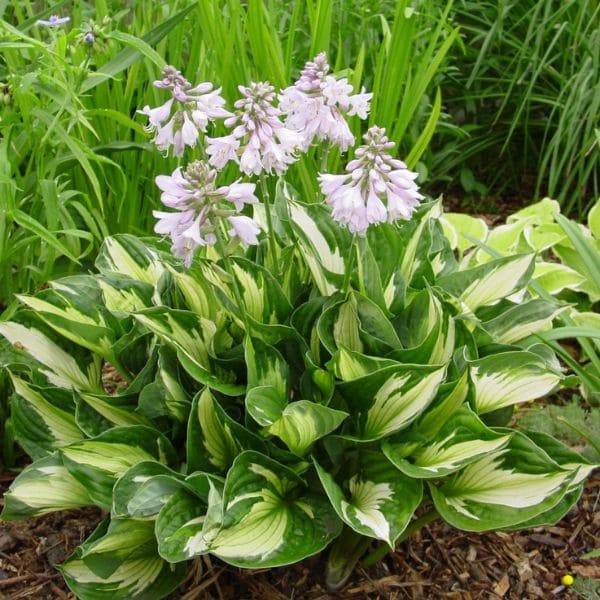
- Mature Size: 1-2 feet tall, 1-3 feet wide
- Sun Exposure: Partial to full shade
- Soil Requirement: Rich, well-drained soil
- USDA Hardiness Zone: 3-9
Hosta is known primarily for bold, broad leaves with variegated patterns. It also produces fragrant flowers ranging from white, lavender to pale purple on tall, slender stalks.
This plant thrives in rich, well-drained soil and prefers partial to full shade. Hostas are low-maintenance, drought-tolerant but they can be a favorite snack for deer and slugs.
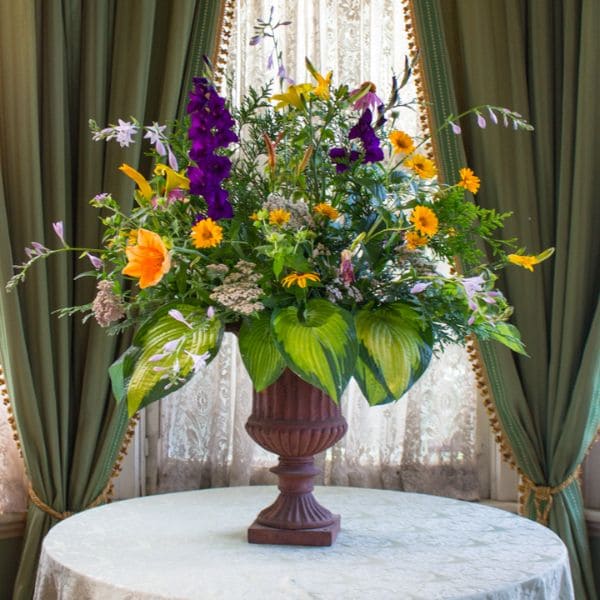
Remember to snip the flower stalks when most of the blooms are open. The flowers and leaves of hostas are excellent when paired with lilies and hydrangeas.
Daylily (Hemerocallis)
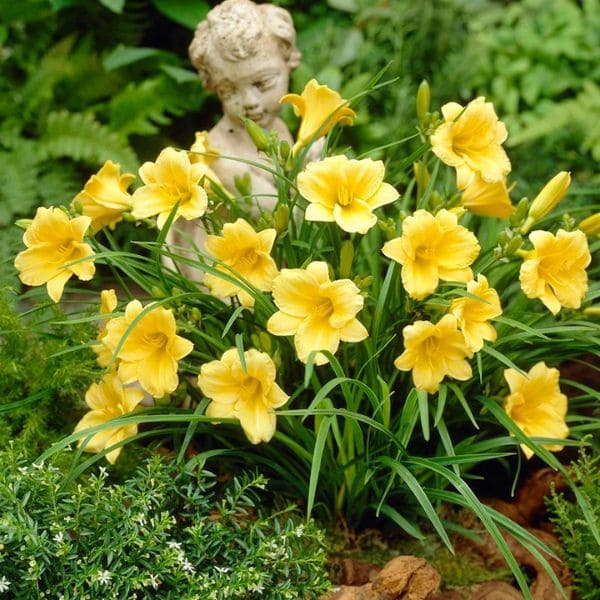
- Mature Size: 1-4 feet tall, 1-2 feet wide
- Sun Exposure: Full sun to partial shade
- Soil Requirement: Well-drained, fertile soil
- USDA Hardiness Zone: 3-9
Native to Asia, daylilies are renowned for trumpet-shaped flowers with yellow, orange, red, pink, and purple.
Each flower lasts for just a day, hence the name “daylily,” but the plants produce multiple blooms over an extended period providing continuous color.
Daylilies thrive in well-drained, fertile soil and prefer full sun to partial shade. They are low-maintenance and drought-tolerant once established.
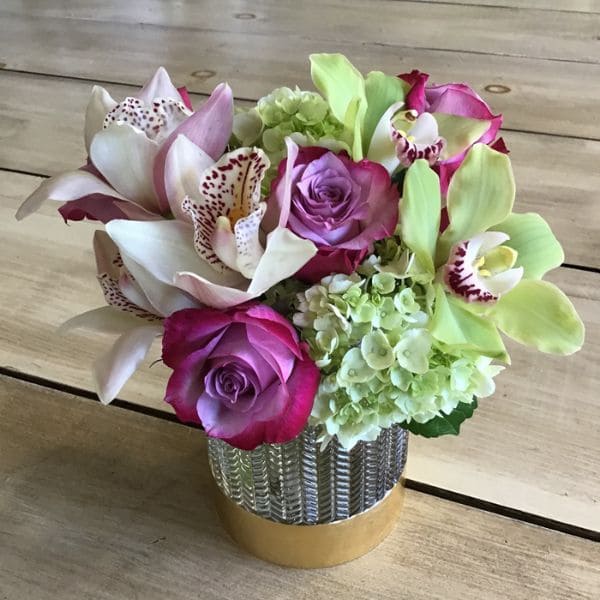
For the freshest display, you should select stems with buds that are just about to open.
Daylilies symbolize motherhood and devotion. Therefore, you can pair them with lilies or irises for mixed bouquets for special occasions.
Larkspur (Delphinium)
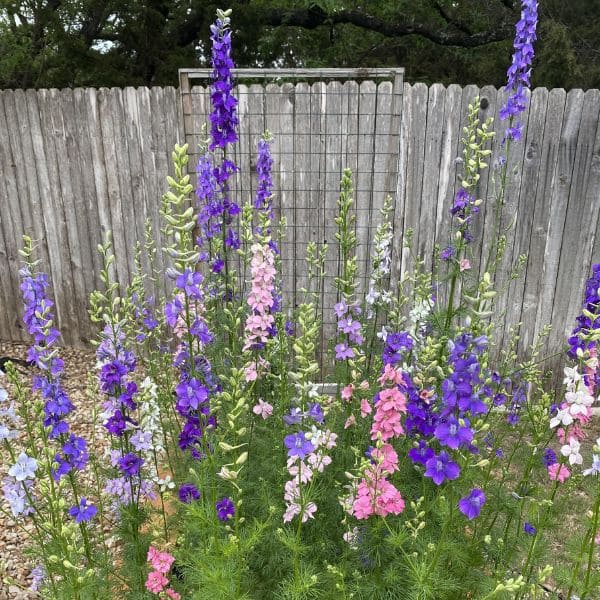
- Mature Size: 1-7 feet tall, 1-2 feet wide
- Sun Exposure: Full sun
- Soil Requirement: Rich, well-drained soil
- USDA Hardiness Zone: 3-7
Larkspur is famous for its tall, stately spikes of flowers with blue, purple, pink, and white and dark green deeply lobed leaves.
The flowers are often densely packed along the stems creating a dramatic vertical element. They also attract pollinators such as bees and butterflies.
Delphiniums thrive in rich, well-drained soil and require full sun to achieve their best growth. They prefer cooler climates and need regular watering, especially during dry periods.
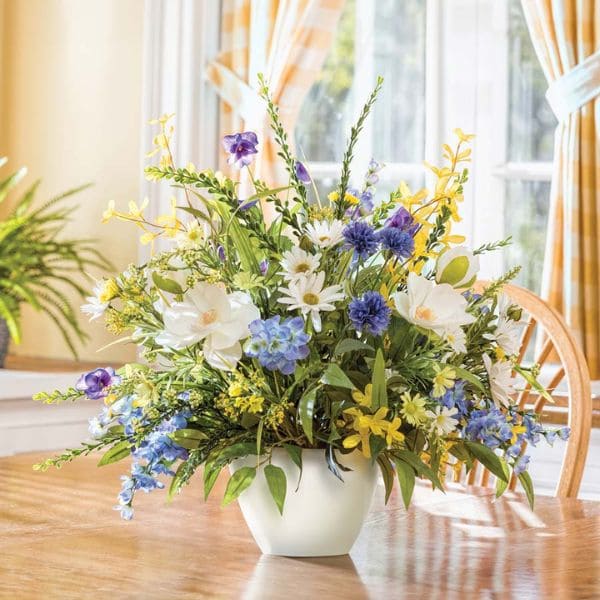
Select stems when about three-quarters of the flowers on the spike are open. They will add height to mixed bouquets, pairing with shorter flowers like roses and daisies.
False Spirea (Astilbe)
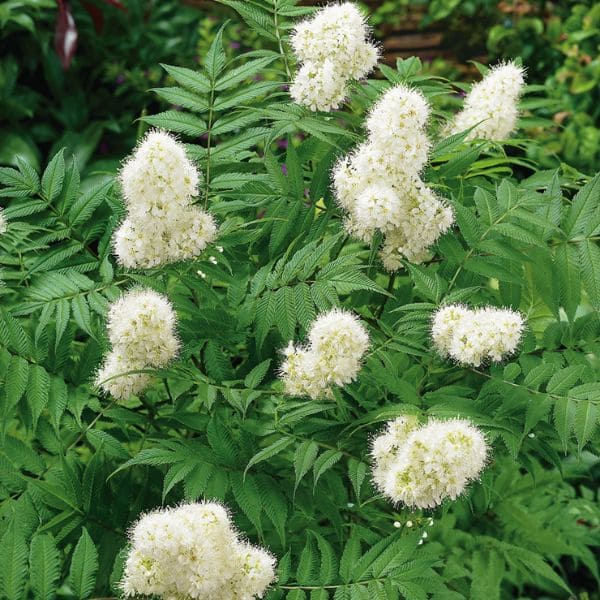
- Mature Size: 1-3 feet tall, 1-2 feet wide
- Sun Exposure: Partial shade to full shade
- Soil Requirement: Rich, well-drained, consistently moist soil
- USDA Hardiness Zone: 4-9
Astilbe owns feathery plumes of flowers that bloom in shades of pink, red, white, and lavender. Its fern-like, deep green leaves provide a lush backdrop to the colorful blooms.
Astilbe thrives in moist, well-drained, rich soil and prefers partial to full shade. Regular watering is essential, especially during dry periods.
Astilbe attracts pollinators like bees and butterflies. It’s generally resistant to pests and diseases, making it a low-maintenance choice for gardeners.
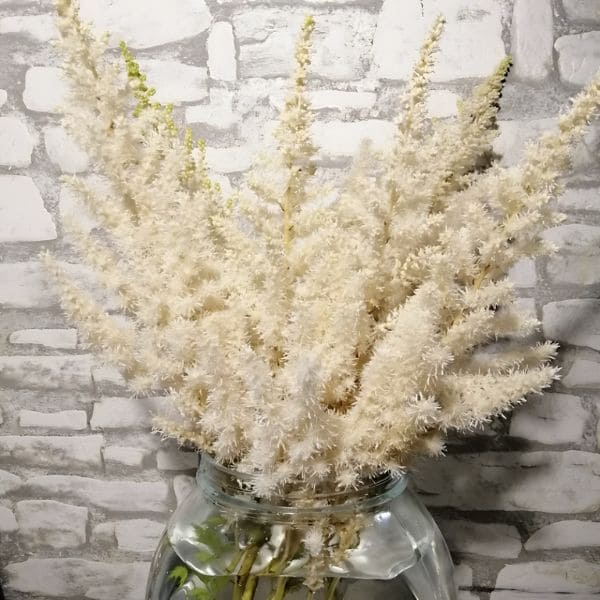
Remember to harvest false spirea when they are fully open for the longest-lasting display. Besides, you can mix your vase with other perennials such as hostas and ferns.
Coneflower (Echinacea)
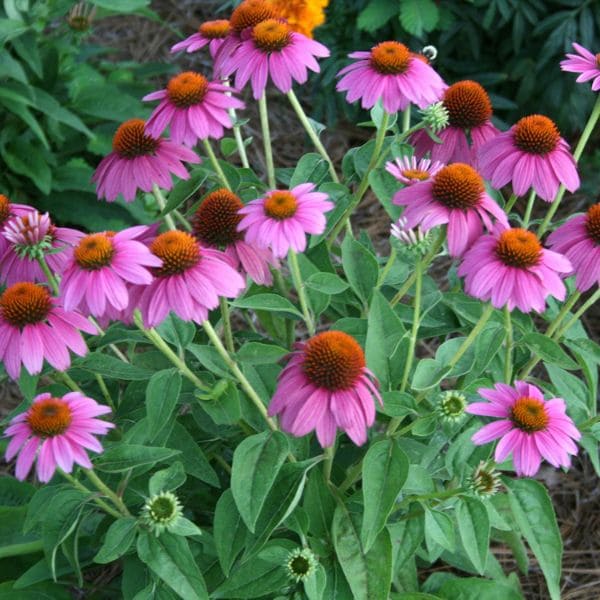
- Mature Size: 2-4 feet tall, 1-2 feet wide
- Sun Exposure: Full sun to partial shade
- Soil Requirement: Well-drained, fertile soil
- USDA Hardiness Zone: 3-9
Coneflower is cherished for its large, daisy-like flowers that come in vibrant shades of pink, purple, yellow, and white, with distinctive, raised centers that resemble cones.
This plant thrives in well-drained, fertile soil and prefers full sun to partial shade. It is drought-tolerant once established and requires minimal maintenance.
Its flowers are excellent for attracting pollinators such as bees, butterflies, and hummingbirds. It is also resistant to most pests and diseases ensuring healthy growth.

The best time to harvest these flowers is when they are just beginning to open. Their sturdy stems and vibrant blooms with rudbeckia and shasta daisies create stunning arrangements.
Peony (Paeonia)
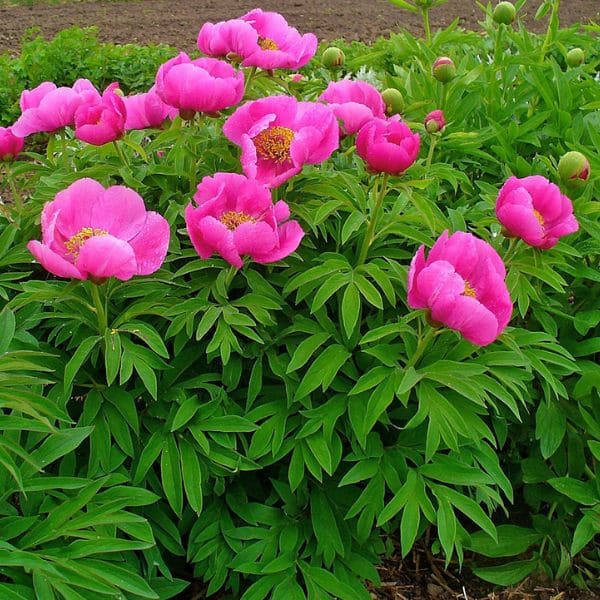
- Mature Size: 2-4 feet tall, 2-3 feet wide
- Sun Exposure: Full sun to partial shade
- Soil Requirement: Well-drained, fertile soil
- USDA Hardiness Zone: 3-8
Peonies have large, lush blooms that come in many colors like pink, red, white, and yellow. They are highly fragrant, adding a delightful scent to your garden and floral arrangements.
Peonies are best propagated through division in the fall.
They thrive in well-drained, fertile soil and prefer full sun to partial shade. These hardy plants require minimal care once established and are relatively drought-tolerant.
Peonies are excellent for attracting pollinators like bees, adding ecological benefits to their ornamental appeal. They are also resistant to most pests and diseases, ensuring robust and healthy growth.
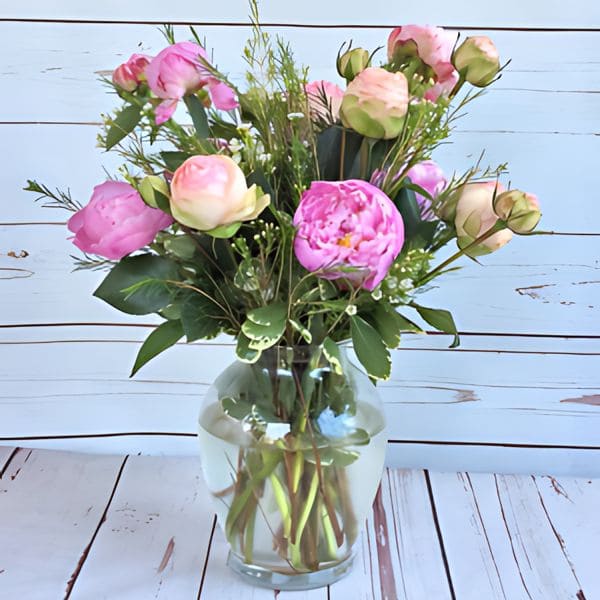
For the longest vase life, harvest peonies when the buds are soft and just beginning to show color. Also, pair them with roses to add a touch of luxury and romance.
Black-eyed Susan (Rudbeckia hirta)
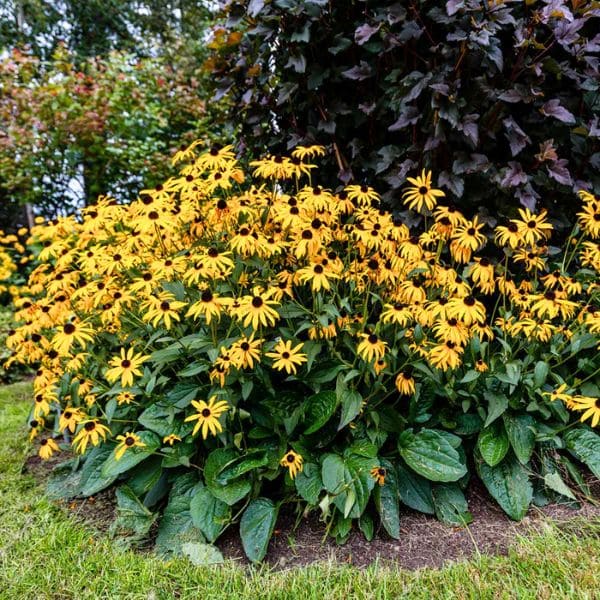
- Mature Size: 2-3 feet tall, 1-2 feet wide
- Sun Exposure: Full sun
- Soil Requirement: Well-drained, fertile soil
- USDA Hardiness Zone: 3-9
Black-eyed susan is famous for its bright yellow or orange daisy-like flowers with dark brown centers, which bloom from midsummer to fall.
The blooms are supported by sturdy, hairy stems and are complemented by lance-shaped, green leaves.
These plants thrive in well-drained, average soil and require full sun to flourish. They are drought-tolerant once established and demand little maintenance.
Rudbeckia attracts a variety of pollinators, including bees and butterflies. They are also resistant to most pests and diseases, ensuring vigorous growth.
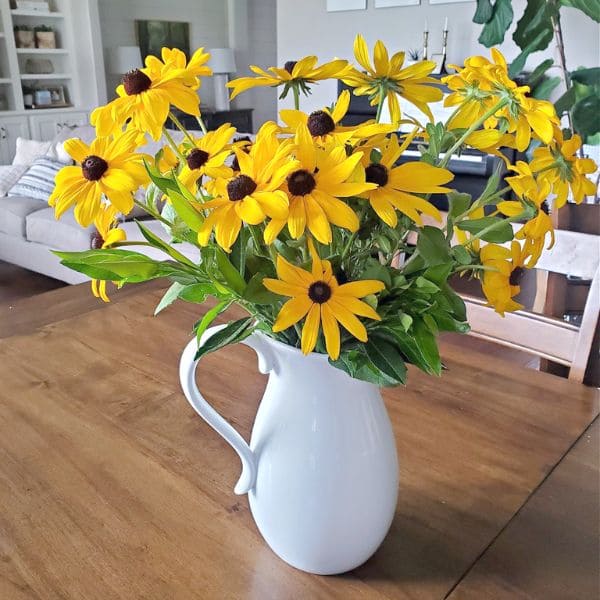
Harvest rudbeckia flowers when they are fully open. With proper care, you can enjoy them for up to 10 days in a vase.
Phlox (Phlox paniculata)
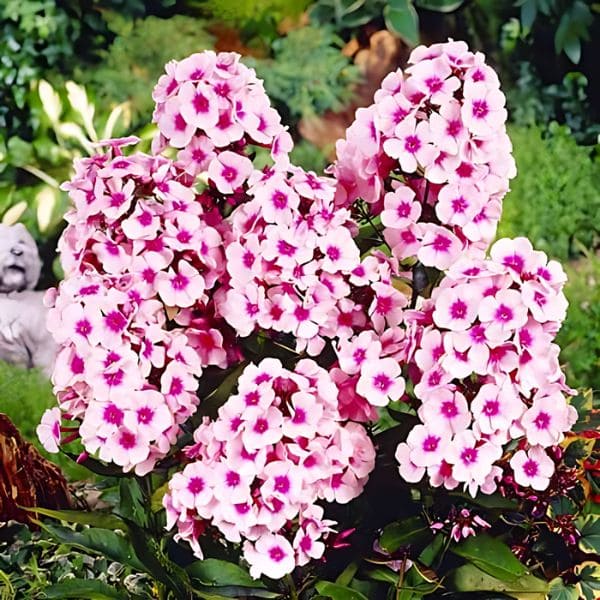
- Mature Size: 2-4 feet tall, 2-3 feet wide
- Sun Exposure: Full sun to partial shade
- Soil Requirement: Well-drained, fertile soil
- USDA Hardiness Zone: 4-8
Phlox has dense clusters of fragrant flowers that bloom in pink, red, white, and purple. The flowers have a sweet, pleasant fragrance, and are held above the foliage on tall, slender stems.
Phlox thrives in well-drained, fertile soil and prefers full sun to partial shade. It requires regular watering to maintain its lush appearance, especially during dry spells.
Phlox attracts bees, butterflies, and hummingbirds. However, note that it can be susceptible to powdery mildew in humid conditions.
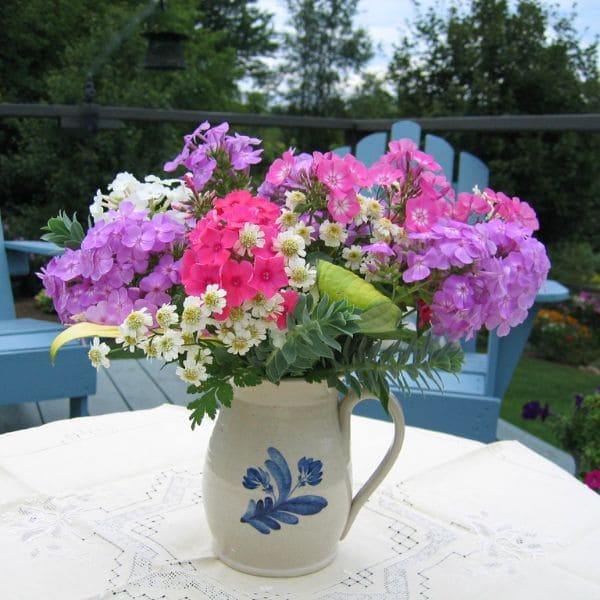
Cut phlox flowers when they are fully open. The blooms last well in water and mix beautifully with other perennials such as shasta daisies and echinacea.
Shasta Daisy (Leucanthemum × superbum)

- Mature Size: 2-3 feet tall, 1-2 feet wide
- Sun Exposure: Full sun
- Soil Requirement: Well-drained, average soil
- USDA Hardiness Zone: 5-9
Native to Europe but widely cultivated in North America, shasta daisy is known for its bright white petals surrounding a sunny yellow center.
The flowers are large, often 2-3 inches across, and bloom from early summer to fall. The leaves are dark green, lance-shaped, and form a lush base for the tall stems.
Shasta daisies thrive in well-drained, average soil and require full sun to flourish. They are drought-tolerant once established and are relatively low-maintenance.
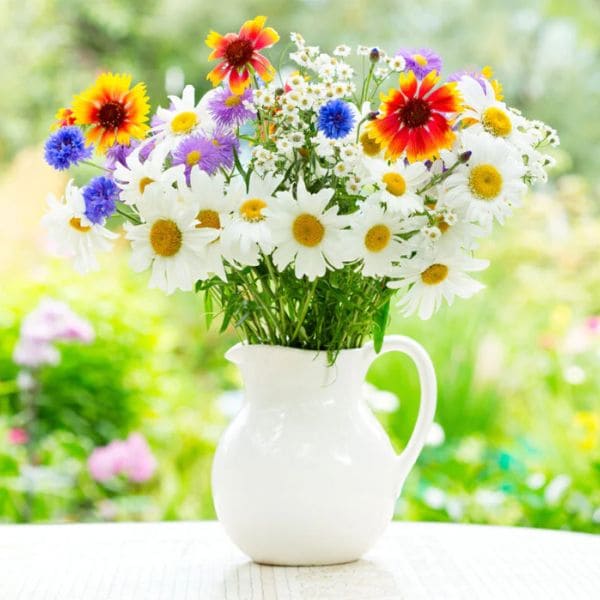
You can enjoy flowers in a vase for up to 10 days by harvesting them when they are fully open. The cheerful blooms mix well with coneflowers creating bright bouquets.
Tickseed (Coreopsis)
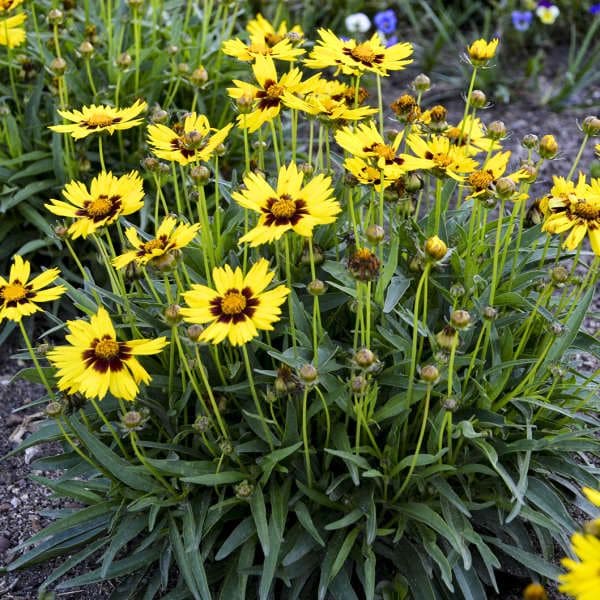
- Mature Size: 1-3 feet tall, 1-2 feet wide
- Sun Exposure: Full sun
- Soil Requirement: Well-drained, average soil
- USDA Hardiness Zone: 4-9
The name “Tickseed” comes from the shape of its seeds, which resemble ticks. It has bright, daisy-like flowers that bloom in shades of yellow, gold, and red.
The flowers are typically 1-2 inches in diameter and sit atop slender, branching stems. The foliage is fine and thread-like.
Coreopsis thrives in well-drained, average soil and requires full sun. It is drought-tolerant once established and demands little maintenance.
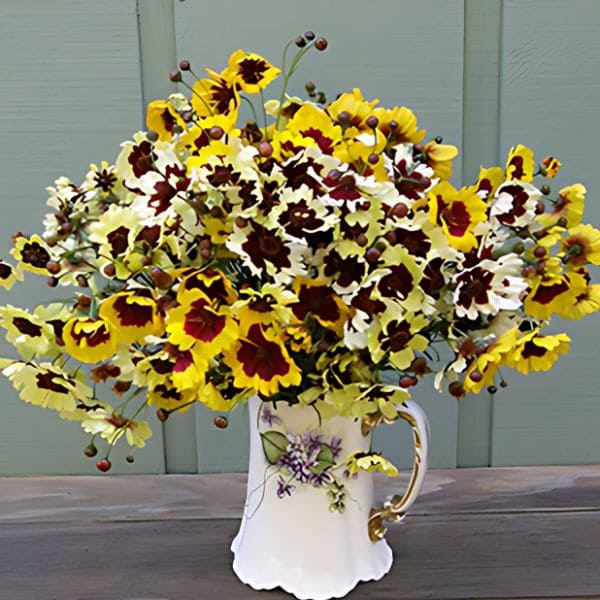
The vase life of tickseed is typically about 7-10 days. Its blooms mix beautifully with other perennials such as echinacea creating vibrant and lively bouquets.
Yarrow (Achillea millefolium)
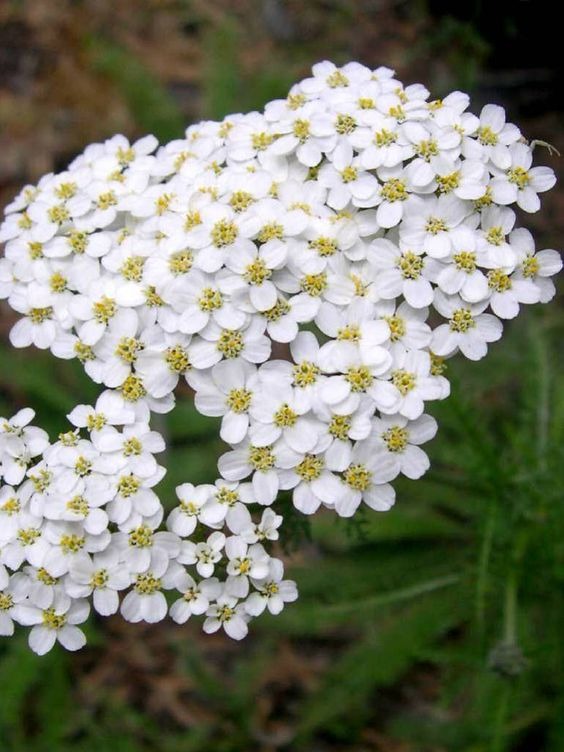
- Mature Size: 2-3 feet tall, 2 feet wide
- Sun Exposure: Full sun
- Soil Requirement: Well-drained, average to sandy soil
- USDA Hardiness Zone: 3-9
Yarrow owns flat-topped clusters of small, long-lasting flowers that bloom in white, yellow, pink, and red. The feathery, fern-like foliage is aromatic.
Yarrow thrives in well-drained, average to sandy soil and prefers full sun to achieve its best growth. It is drought-tolerant and requires minimal maintenance.

For arranging, harvest yarrow when most of the flowers in the cluster are open. Your vase will look better when paired with other perennials like echinacea and rudbeckia.
Lavender (Lavandula)

- Mature Size: 1-3 feet tall, 1-2 feet wide
- Sun Exposure: Full sun
- Soil Requirement: Well-drained, sandy or gravelly soil
- USDA Hardiness Zone: 5-9
Lavender is renowned for aromatic, spiky flowers with purple, blue, pink, and white. The slender, silver-green leaves are also fragrant and common in floral arrangements.
Lavender thrives in well-drained, sandy or gravelly soil and requires full sun to flourish. It is drought-tolerant and demands minimal maintenance.
This flower attracts a variety of pollinators, including bees and butterflies. It is also resistant to most pests and diseases.

You should harvest lavender when the flowers are fully open but before they start to fade. Mix it beautifully with phlox to add a delightful scent to bouquets.
Sage (Salvia)

- Mature Size: 1-4 feet tall, 1-2 feet wide
- Sun Exposure: Full sun
- Soil Requirement: Well-drained, moderately fertile soil
- USDA Hardiness Zone: 4-10
Sage is native to various regions across the globe, including Central and South America, and the Mediterranean.
This plant has tall spikes of tubular flowers that bloom in blue, purple, red, and pink. The foliage is typically a fragrant and soft green.
Salvia thrives in well-drained, moderately fertile soil and requires full sun to achieve its best growth. It is drought-tolerant once established and demands minimal maintenance.
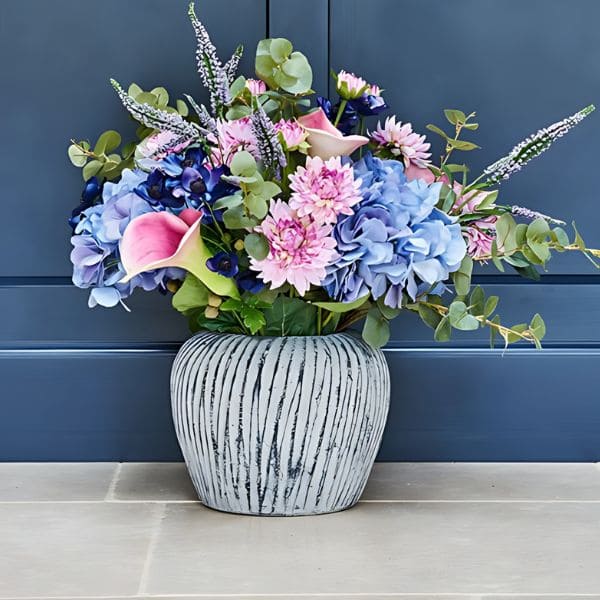
Harvest sage when the lower flowers on the spike are just starting to open. Besides, mix it with hydrangea to enjoy a unique arrangement which lasts up to 10 days.
Stonecrop (Sedum)
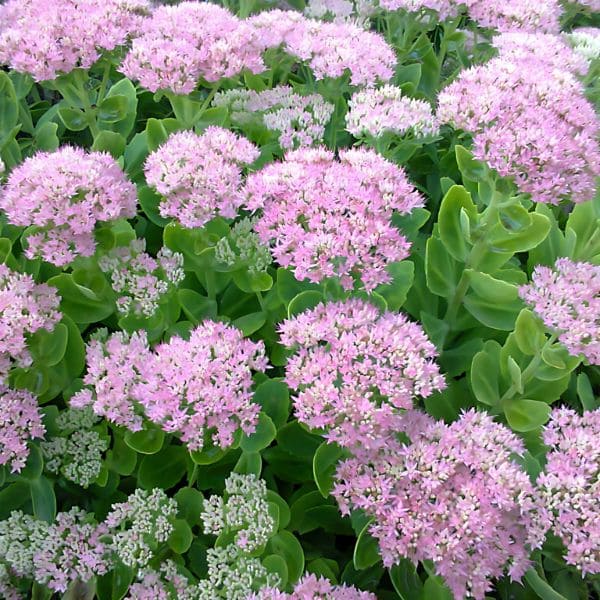
- Mature Size: 1-2 feet tall, 1-2 feet wide
- Sun Exposure: Full sun
- Soil Requirement: Well-drained, sandy or rocky soil
- USDA Hardiness Zone: 3-9
Sedum has succulent, fleshy leaves and clusters of star-shaped flowers. Its flowers bloom in late summer to fall with pink, red, yellow, and white.
The leaves are typically green but can also be blue-gray or tinged with red, depending on the variety.
Sedum thrives in well-drained, sandy or rocky soil and prefers full sun. It is exceptionally drought-tolerant and requires minimal maintenance.
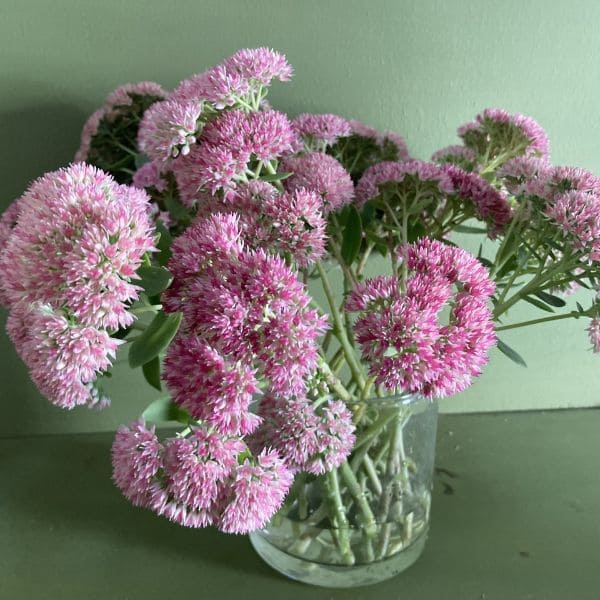
Harvest stonecrops when they are fully open. These blooms have a long vase life, typically lasting up to two weeks.
Aster (Aster)
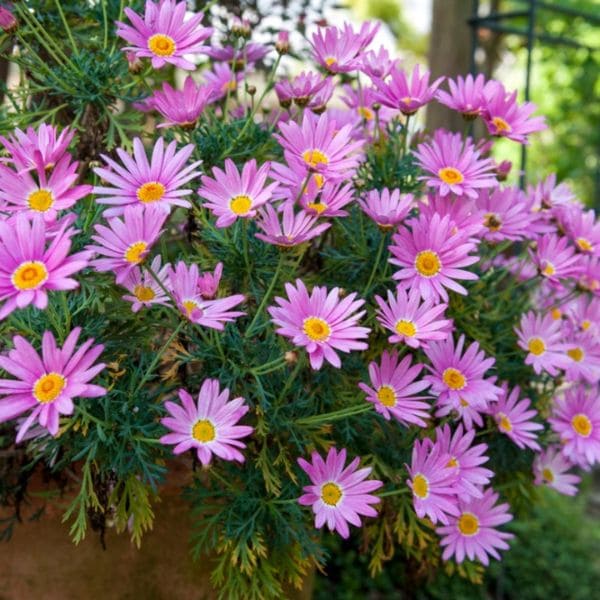
- Mature Size: 1-6 feet tall, 1-3 feet wide
- Sun Exposure: Full sun to partial shade
- Soil Requirement: Well-drained, average soil
- USDA Hardiness Zone: 4-8
Asters are known for their vibrant, daisy-like flowers that bloom from late summer to fall and slender, lance-shaped leaves.
The flowers come in a range of colors including purple, pink, blue, and white, often with yellow centers.
Asters thrive in well-drained, average soil and prefer full sun to partial shade. They are relatively low-maintenance and drought-tolerant.
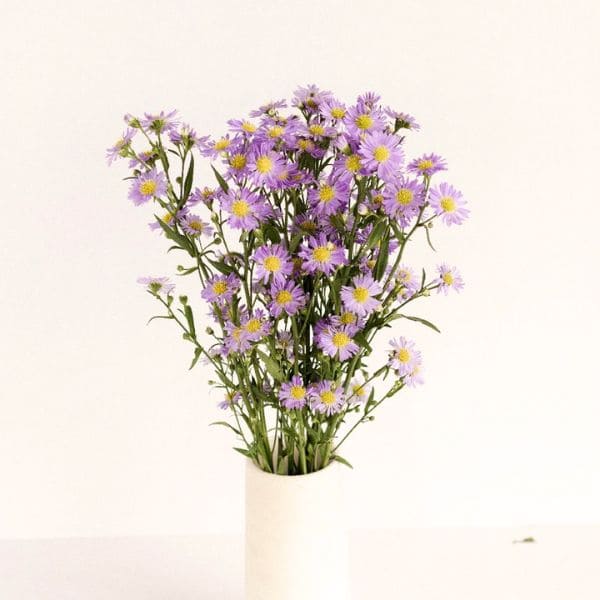
Remember to harvest aster flowers when they are fully open. Additionally, you can pair it with sedum and rudbeckia to enjoy vibrant arrangements.
Russian Sage (Perovskia atriplicifolia)
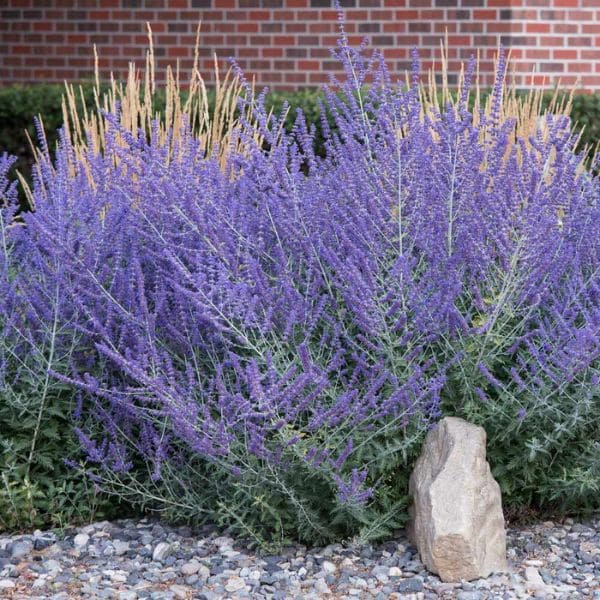
- Mature Size: 3-5 feet tall, 2-4 feet wide
- Sun Exposure: Full sun
- Soil Requirement: Well-drained, sandy or loamy soil
- USDA Hardiness Zone: 4-9
Russian sage is admired for tall, airy spikes of small, tubular flowers that bloom in stunning shades of lavender-blue from mid-summer to fall.
The silvery-green, finely divided leaves release a pleasant, aromatic fragrance when brushed against or crushed.
Russian sage thrives in well-drained, sandy or loamy soil and requires full sun. It is drought-tolerant and ideal for xeriscaping and low-water gardens.
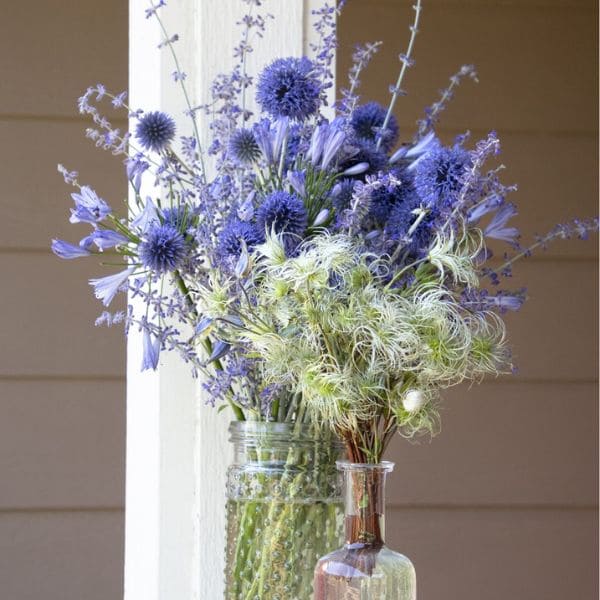
You should harvest its stems when the majority of the flowers on the spikes are open. The airy, wispy blooms of Russian sage will pair beautifully with sunflowers.


